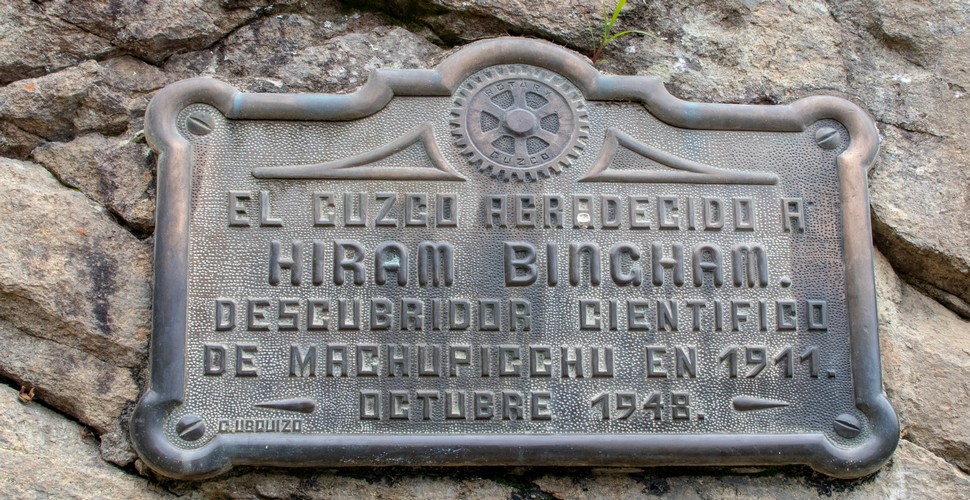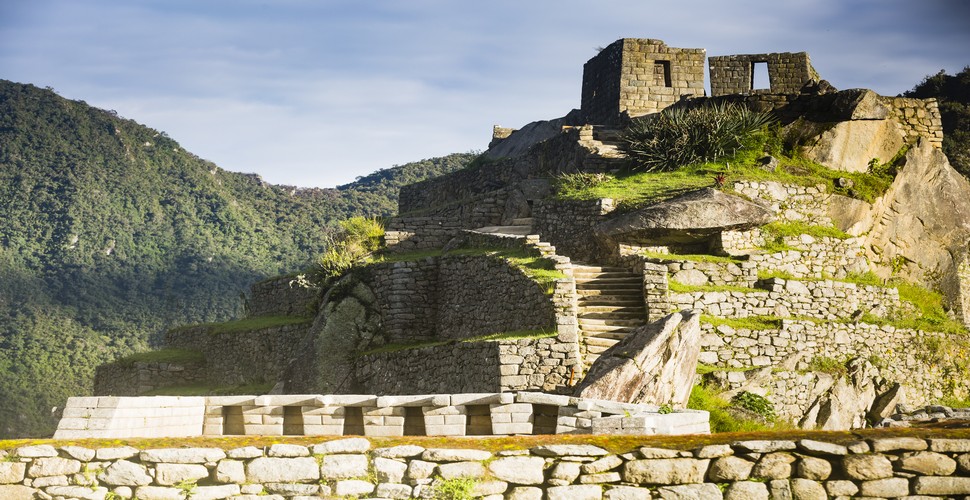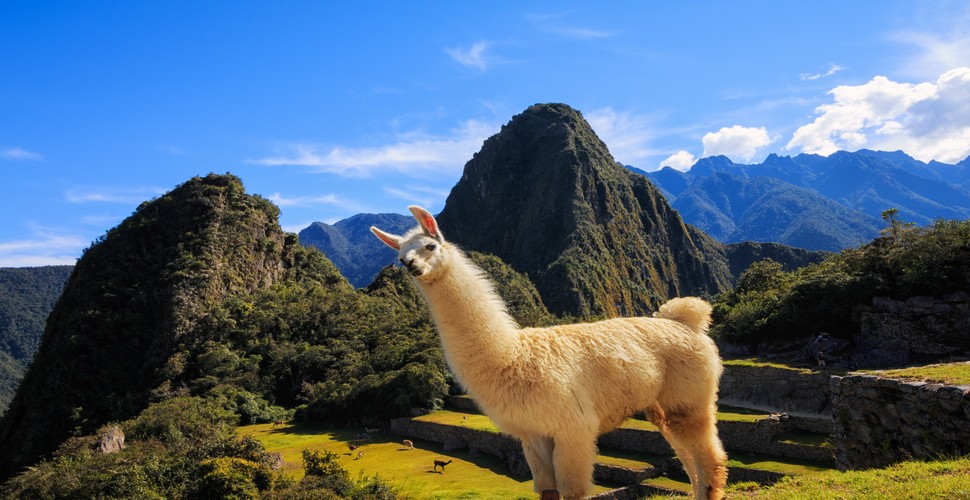
A history of Machu Picchu´s Discovery
Written by:Valencia Travel
Last Update: 2025-01-28
Machu Picchu, the famous historical and impressive landmark in Peru is a site that sits at the top of many travelers' preferred places to visit. There are a number of things you quite possibly didn’t know about Machu Picchu, how it was discovered and by whom as well as some lesser-known facts about this magical Inca citadel. Read on for some fascinating insights into the magical sight in Peru, that attracts travelers in their droves to immerse themselves in Inca history!

Machu Picchu
Where is Machu Picchu?
Machu Picchu is located in the eastern cordillera of the Andes in Peru, about 450 km southeast of Lima and 70 km northwest of Cusco. The iconic Inca site is found at an altitude of around 2400 m on a wide ridge that was adapted by The Incas, above the winding Urubamba River (also called the Vilcanota River). This belongs to the river system of the Amazon. The Inca city is located in the mountain cloud forests of the Vilcanota Mountain range. The site is strategically protected from all points. Access was originally from the southeast via the Inca Trail, through the Sun Gate. There were also other entrance points, via The Inca Bridge, for example.
Temple at Machu Picchu
When Was Machu Picchu Discovered?
Although Machu Picchu has been here for centuries, it is claimed that the archaeological site was ‘discovered’ a hundred years ago by an American archaeologist called Hiram Bingham in 1911. Bingham was a law professor at the prestigious Yale University in the U.S.A. with an interest in archaeology, who was led there by a young local boy during his search for a completely different site, called Vilcabamba. Bingham’s chance discovery of Machu Picchu was a complete accident. He was looking for the Lost City of the Incas, called Vilcabamba, a place where the Incas battled against the Spanish Conquistadors. It was later declared that the actual Lost City of the Incas was to the west of Machu Picchu, now called Espiritu Pampa.
Machu Picchu Terraces Close-up!
Who Built Machu Picchu?
Machu Picchu was built by The Incas. It is believed that Pachacutec, the 9th Inca ruler, ordered the construction and reigned from 1438–1471. The builders of Machu Picchu employed various techniques, including ramps, ropes, and manpower, to transport the heavy stones from quarries located a number of kilometers away. The exact identity of the actual builders remains a mystery to this day. It is thought that the city was built by skilled Inca engineers, architects, and laborers who meticulously planned and created the impressive citadel.
Group at Machu Picchu
Why Is Machu Picchu so Famous?
Machu Picchu was declared a Peruvian Historic Sanctuary in 1982 and a UNESCO World Heritage Site in 1983. In 2007, Machu Picchu was voted one of the New Seven Wonders of the World in a worldwide internet poll. Its prestige relates not just to its incredibly well-preserved architecture, the site is also defined by it´s extraordinary location. Machu Picchu offers a fascinating insight into Peru´s Inca culture and its mind-blowing engineering feats that were so advanced for that time in history. Especially, bearing in mind, that they did not use any animals, the wheel, or sophisticated tools when they built this truly awe-inspiring citadel. According to engineers, 60% of Machu Picchu´s building techniques are actually underground, with foundations and crushed rock used for anti-seismic purposes and drainage. This just adds to the magnificence of this awe-inspiring Inca archaeological site.
The Iconic Machu Picchu
When Was Machu Picchu Built?
Bingham was convinced that Machu Picchu was actually the Lost City of the Incas until another explorer, Gene Savoy, finally managed to prove otherwise. Archaeologists have worked hard to discover what Machu Picchu was built for and when. It’s believed to have been built in 1532 as a remote retreat for the royal Inca family when they wished to get out of the main city, Cusco. However, some archaeologists argue it was built in the early 1400s. The truth about Machu Picchu is still under discussion and theories vary from a fortress to a final destination of a religious pilgrimage.

Plaque to Hiram Bingham
Why Was Machu Picchu Abandoned?
Why did Machu Picchu take so long to be discovered? And why did the Incas go to great lengths to avoid its discovery? The exact reasons why Machu Picchu was abandoned are still debated, but there are several theories:
The Incas abandoned Machu Picchu one hundred years after its construction, fearing that the Spanish invaders would find it. The city was abandoned around the early 16th century. As they descended the mountain, they burnt the forest trails so that the paths up to Machu Picchu were completely destroyed. This turned out to be an excellent plan as the Spanish never did discover Machu Picchu nor did anyone else for more than 300 hundred years.
Many scholars believe diseases like smallpox, measles, and syphilis may have been introduced to the remote regions of Peru by traders or the Spanish when they arrived. The Indigenous people had no immunity to these diseases, which could have devastated the population.
Others believe that the Inca Empire was weakened by internal issues, civil war, and external pressures from the Spanish conquistadors. This political instability may have led to the relocation of Machu Picchu´s residents.
Machu Picchu's remote location may have contributed to its abandonment. The rapid expansion of the Inca Empire may have led to the over-exploitation of natural resources, such as agricultural land and water. So, maybe life became unsustainable as the city grew in population.
The high-altitude Andean region is prone to a lot of seismic activity and natural disasters. Theorists believe that people were escaping some kind of natural disaster.
Over the years, the Inca custom was to construct a "new royal estate" for each new Inca ruler. After the death of Pachacutec, the next ruler may have decided to move his retreat elsewhere.

View over Machu Picchu
How Did The Incas Build Machu Picchu?
One of the most impressive feats of the Incas, when they built Machu Picchu, was how they got those huge stones up the mountains. Remarkably, the Incas carried the stones by hand, working together to get the stones up the rocky mountain. Not only did they achieve this, but their stone masonry is out of this world as all the stones were cut by hand to perfectly fit with each other, like a jigsaw puzzle. This technique has given the structures a unique anti-seismic quality protecting it from numerous earthquakes.

Stonework at Machu Picchu
It is thought that the Incas were not alone at Machu Picchu and there is evidence to suggest that they co-habited with other people, tribes, and groups. Archaeologists such as Brian Bauer, claim that textiles and ceramics have been discovered there from all the different regions in Peru, suggesting the site had others either living there or visiting there on a regular basis.
On a visit to Machu Picchu, you will be amazed at the architecture there and it is estimated that 60% of the structures are underground in a series of walls and drains that twist through the ground and remain unnoticed. Since its discovery, the site has been carefully researched and explored by archaeologists who continue to make exciting discoveries proving that Machu Picchu hasn’t lost its air of mystery. A hidden door was found there in 2014 by the French explorer Thierry Jamin, who suggests that the door leads to a burial chamber of the Inca Pachacuti Inca Yupanqui, a royal Inca ruler. However, the Peruvian government has insisted that in order to prevent damage to the archaeological site, and no one can open the door.

Llama at Machu Picchu
The Rules To Enter Machu Picchu
To protect the structures and serenity of Machu Picchu, the government has imposed some strict rules. The most significant is that visitors cannot enter without a guide and must now stick to the specially designated pathways. Other rules include you cannot enter with food, drink (except water), alcohol, umbrellas, professional camera or photographic equipment, musical instruments, high-heels, or children’s prams. Machu Picchu also has a NO Plastic policy so take your water in refillable bottles. Visitors to Machu Picchu cannot climb or lean on the walls or structures in the site, the site is no smoking and you cannot make loud noises, clap, whistle, sing, or shout. Also, it is important to note, that visitors to Machu Picchu cannot lie down, run, jump, or get naked on site which strangely has happened on a few occasions!

An empty Machu Picchu
If this article has inspired you to book a trip to the Inca Citadel in Peru and to see Machu Pichu for yourself - Contact us here! We will help your dreams become a reality to help you discover Machu Picchu, personally!
 Aventure
Aventure
 Cultural
Cultural
 Gastronomy
Gastronomy
 Wellness
Wellness
 Local Living
Local Living
 Luxury
Luxury











